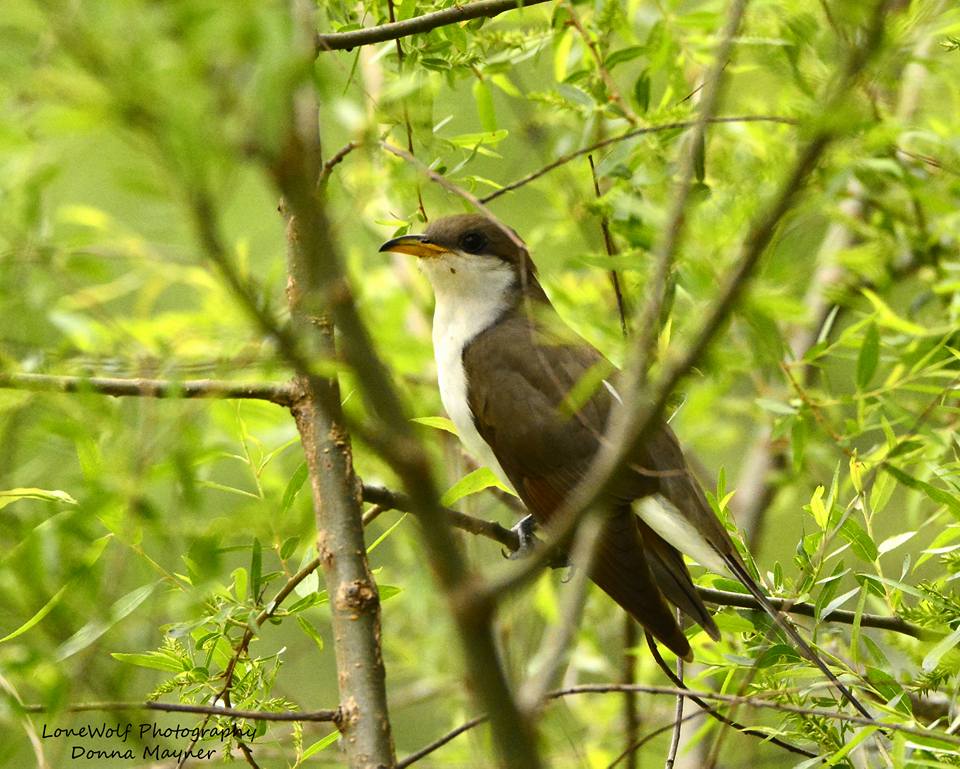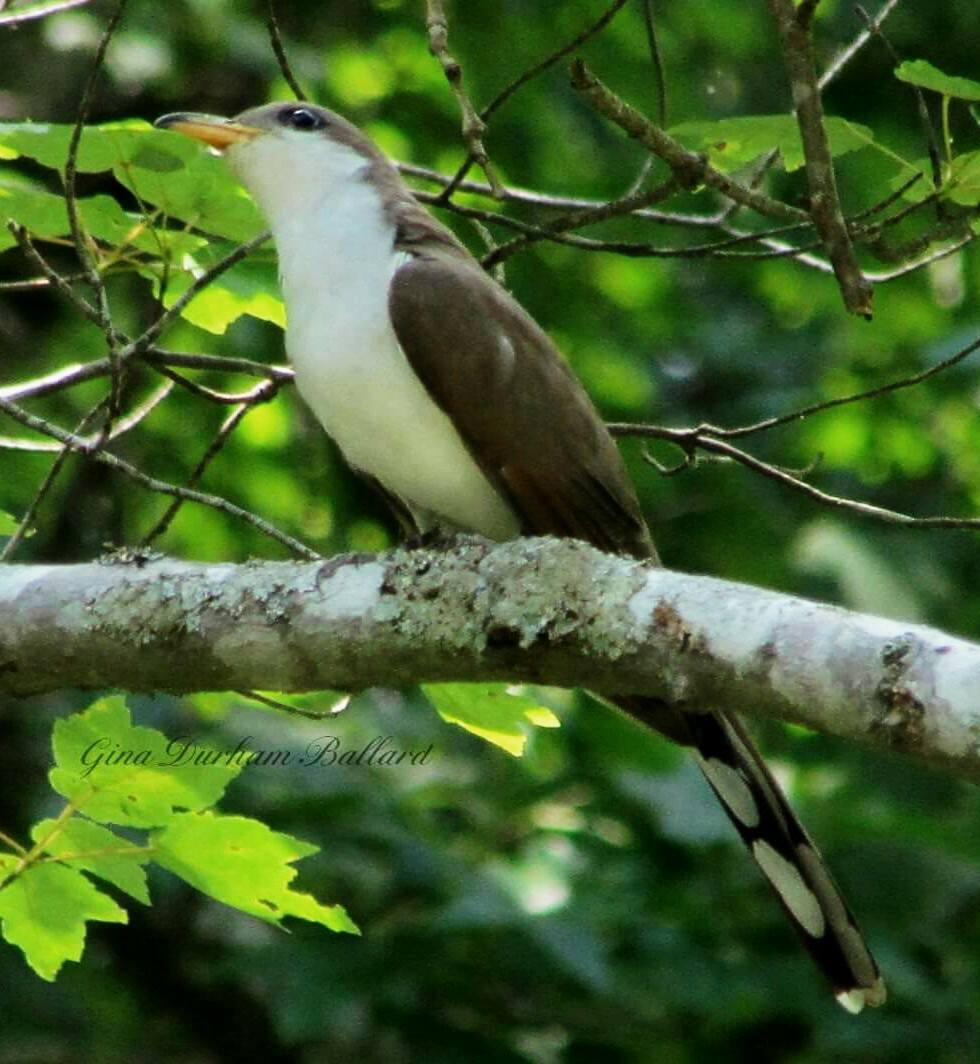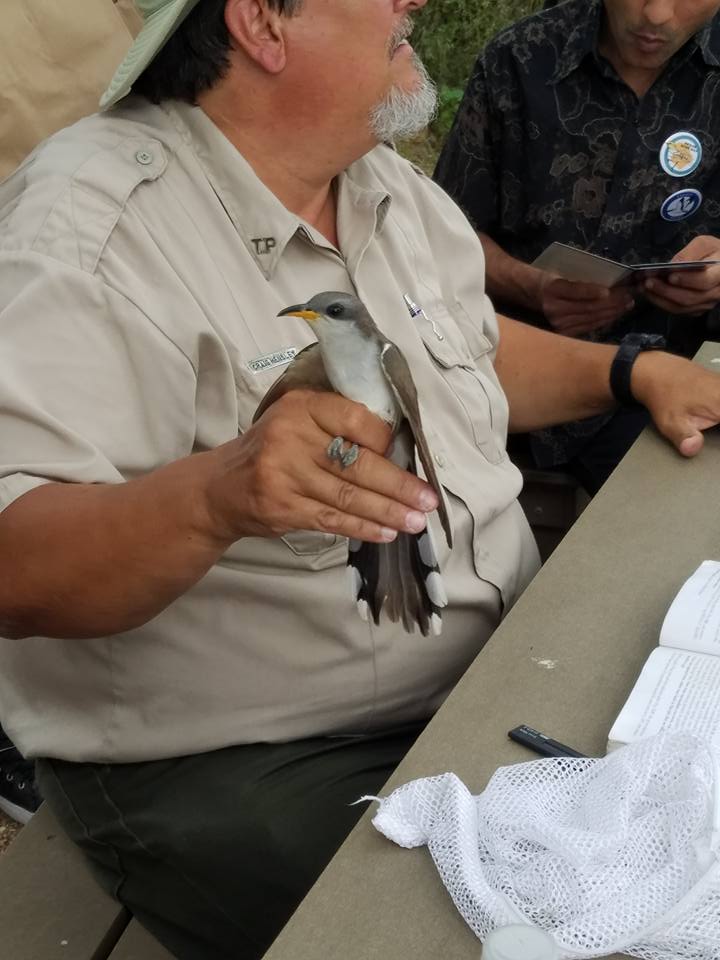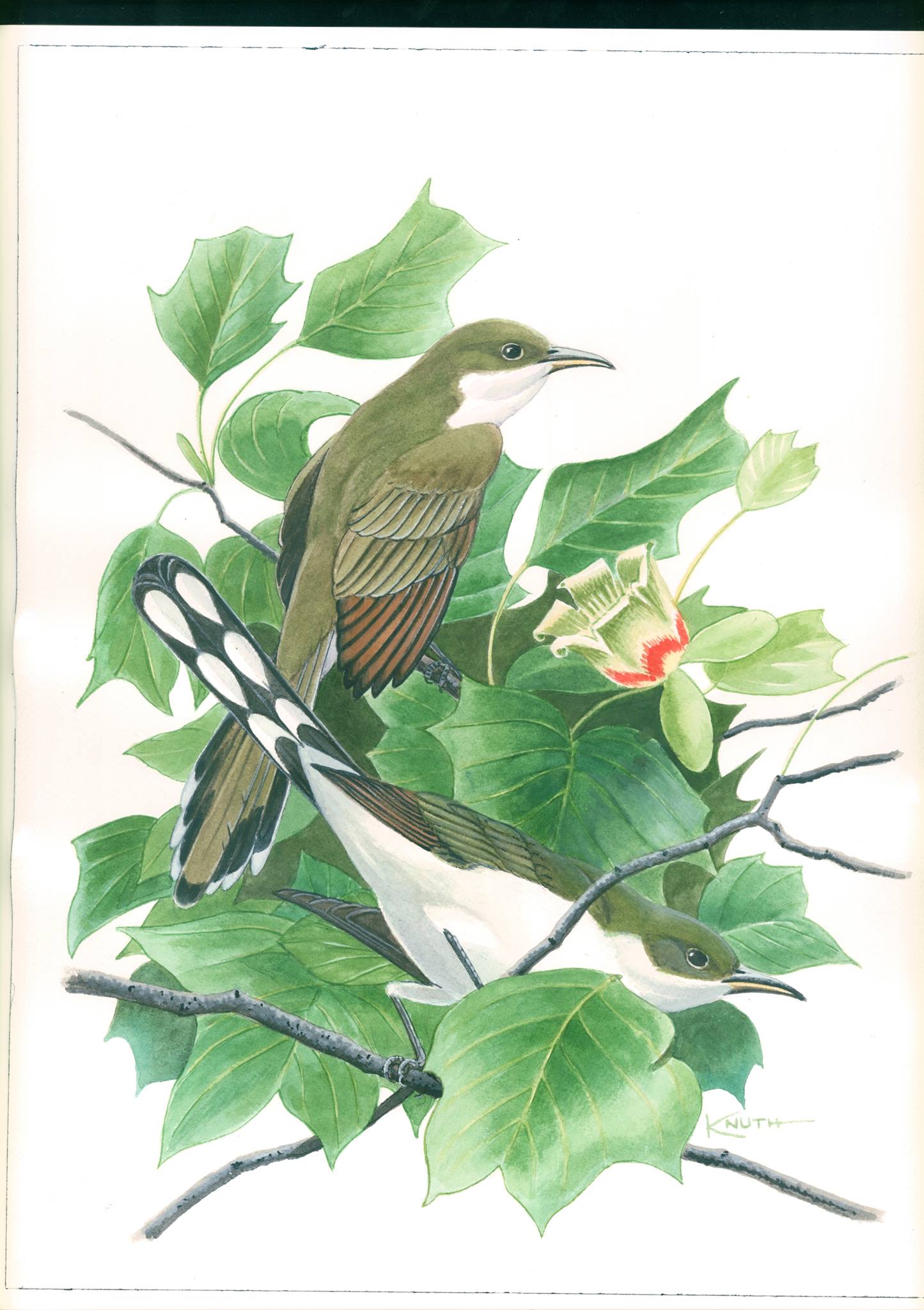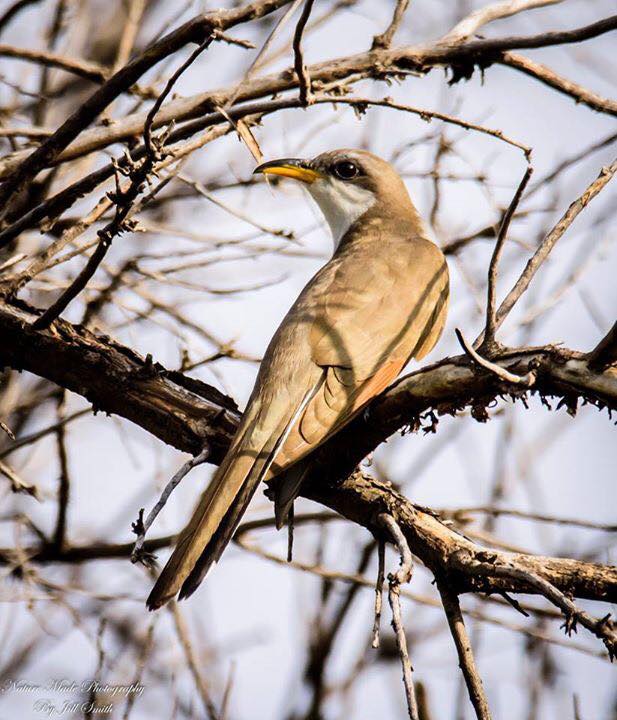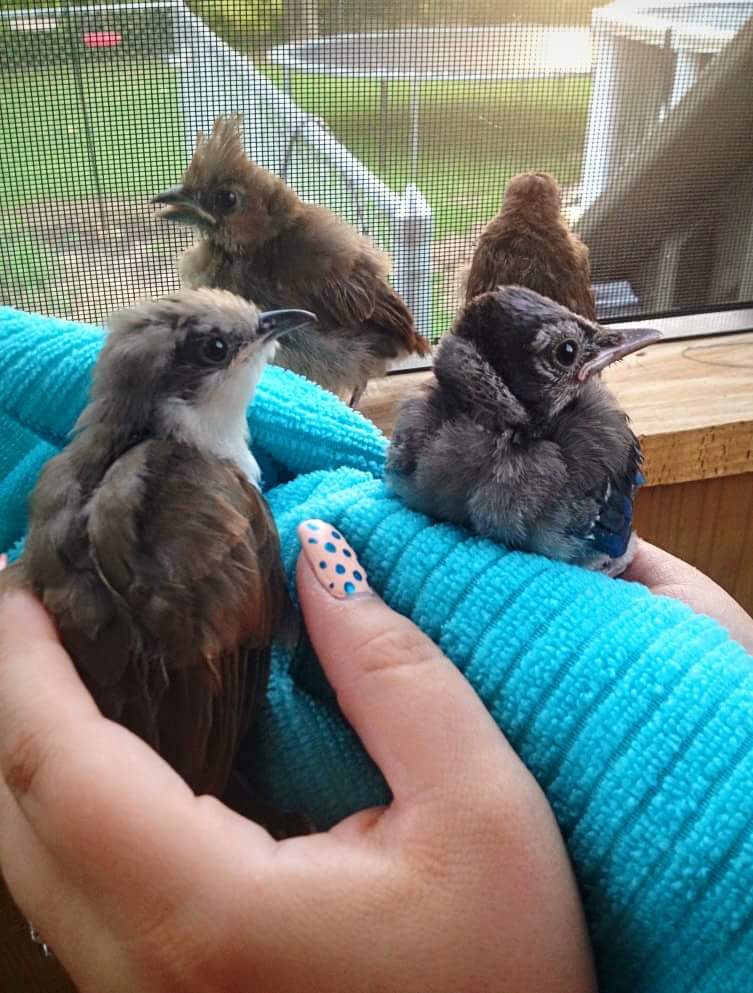If you've ever wondered if cuckoos are real birds or just cuckoo-clock accessories, here's proof that they're real. Melissa Patton took this photo in Alabama of a yellow-billed cuckoo, one of many beautiful and fascinating species in the cuckoo family.
Yellow-billed cuckoo photo by Melissa Patton
Cuckoos of one sort or other are found on every continent except Antarctica. Their name comes from the sound of the call of the common cuckoo (formerly known as the European cuckoo). That bird's constant, seemingly mindless repetition of its call led people to use "cuckoo" to mean "crazy." Click here to listen to that common-cuckoo call: https://www.youtube.com/watch?v=O5N7KHSlBRU
Meanwhile, female common cuckoos' habit of laying eggs in other birds' nests led to the coining of the word "cuckold," describing a husband whose wife has cheated on him. Yellow-billed cuckoos do not share this habit, which is known as brood parasitism. (Below are more yellow-billed cuckoo photos—and a beautiful painting—shared with The Naturalist's Notebook by our followers on Facebook.)
Like most cuckoos, the yellow-billed is long-tailed and prefers feeding on on insects. Indeed, it's one of the few birds willing to eat hairy caterpillars. A hungry yellow-billed can down 100 in one session. That appetite can help control infestations of tree-defoliating tent caterpillars—one more reason to be cuckoo about cuckoos.

